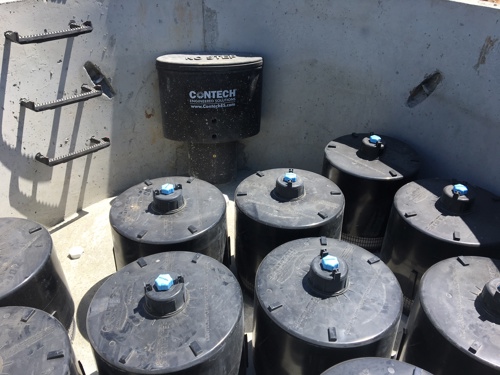
Fundamentals of Stormwater Filtration: A Guide for Civil Engineers
Fundamentals of Stormwater Filtration: Key Concepts Every Civil Engineer Should Know
As stormwater quality regulations become increasingly stringent, civil engineers are turning to stormwater filtration Best Management Practices (BMPs) to meet the demand for higher pollutant removal efficiency. In this blog post, we will explore the fundamentals of stormwater filtration, focusing on pollutant removal mechanisms, sizing methods, filtration mediums, and the advantages of proprietary systems.
Pollutant Removal Mechanisms
Understanding the mechanisms behind pollutant removal is crucial for effective stormwater filtration. Engineers should be aware of physical, chemical, and biological processes. Physical removal occurs when a pollutant is trapped within a filtration medium and removed from the water. Physical-chemical processes, such as absorption and adsorption, result in the pollutants absorbing into or adhering to the filtration medium. Cation exchange reactions and metal complexation are chemical processes that effectively remove dissolved pollutants from runoff.
Biological pollutant removal mechanisms require living entities to complete the removal process. For example, in a biofiltration system, microbes and other organisms are located predominantly in and around the plant roots. The roots provide them with a permanent organic food source and shelter. In exchange, the organisms biodegrade various pollutants captured in the processes above. Through this process, the pollutants are transformed into soluble forms that the plant can utilize. The act of removing these pollutants from the reaction sites in the media opens that site for use the next time it rains, renewing the media’s capacity.
Sizing Methods
StormFilterChoosing the right sizing approach is vital for optimizing stormwater filtration systems. There are three approaches to sizing a filtration system. Typically, a flow-based sizing approach is used to treat the peak water quality storm event. This approach results in the largest size system wherein the filter is serving as a stand-alone treatment device or pretreatment upstream of a detention system. A mass-based approach requires the filtration medium to remove the annual mass load from the drainage area and results in a smaller filtration system placed downstream of a detention system. Volume-based systems require a certain volume of water to be sent to and treated by the filters. These designs will also be checked against a mass-based design approach to ensure the filtration medium is not overloaded with sediment. Local regulations may dictate which sizing approach to adhere to for your site.

Filtration Mediums
The selection of filtration mediums depends on the pollutants of concern. The most common filtration mediums include sand or soil-based traditional systems or proprietary membrane or media technology. Sand and membrane filtration systems are efficient in removing total suspended solids, trash, and particulate-bound pollutants. If dissolved nutrients and metals are the primary pollutants of concern, a soil-based bioretention system or proprietary media filter will perform best.
Benefits of a Proprietary Filtration System
Engineers can maximize the efficiency of stormwater filtration by utilizing proprietary systems/manufactured treatment devices. These systems are tested following strict protocols, either in the lab or field, demonstrating repeatable performance to obtain approvals. To maintain the level of performance associated with these approvals, the QA/QC of proprietary filtration mediums is regulated closely. This reduces the risk of media contamination from construction runoff and performance variability caused by onsite blending processes with locally sourced materials.
The proprietary technology designed to direct water through the filtration medium can result in a much smaller, below-grade system footprint compared to conventional alternatives, reducing installation and maintenance costs. Proprietary systems also have the capability to integrate internal bypass eliminating the need for external bypass and junction structures, further reducing costs and increasing design flexibility.
In the face of stringent stormwater quality regulations, civil engineers play a crucial role in implementing effective filtration systems. By understanding pollutant removal mechanisms, selecting appropriate sizing methods, choosing the right filtration mediums, and leveraging the benefits of proprietary systems, engineers can design and implement stormwater solutions that meet both regulatory requirements and environmental sustainability goals.
